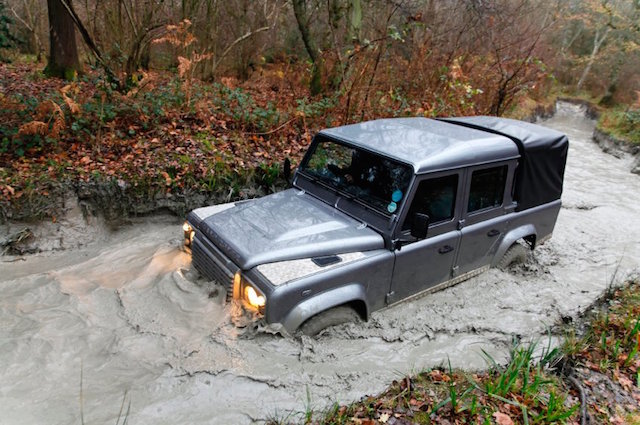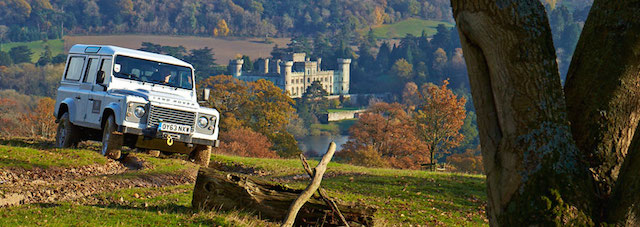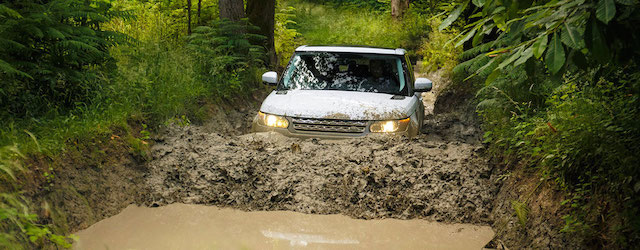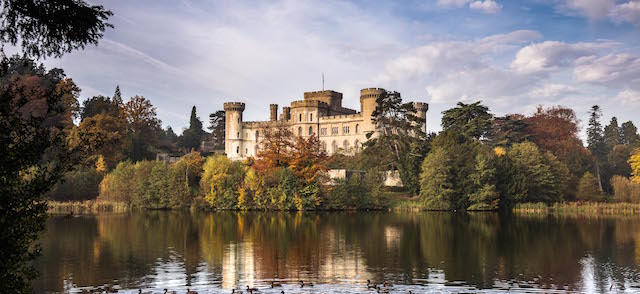
The first Land-Rover shipped to New Zealand left the factory in the English Midlands on September 16, 1948. Chassis number R860020 was consigned to Wellington Motors. That’s all the early export order book shows. I thumbed through it at the company’s head office in Solihull a few years ago. What happened to the first Series 1 model after it landed here, who knows? Records of early Land-Rovers to New Zealand don’t seem to be around. Those of current importers Motorcorp Distributors go back only 20-odd years. Same with those in Singapore, the storeroom for Land-Rover’s Asia-Pacific market. Anyway, more than a decade after I was briefly involved with the 1982 Camel Rally in Papua New Guinea and 35 years after sometimes going to school in a Series 1, I wound up driving with former British Army instructors on a storied estate with links to the elite Special Air Service …
It began as an informal morning in the mid-1990s, driving Land-Rovers with the instructors over an off-road course used for SAS driver training. Camel Trophy competitors used it too.
It ended with a semi-formal lunch cooked by the late Queen Mother’s personal chef and hosted by a retired army officer who insisted that each serving of the steamed pudding for dessert should be splashed with whisky.
The setting was Eastnor Castle, a sleepy 200-year-old estate on 2000 hectares within an hour’s drive of Oxford and around 50km from SAS headquarters in Hereford.
The chef was a Mrs Shepherd, moonlighting from Clarence House. The officer was Major Benjamin Hervey-Bathurst, a fluent French speaker who spied for Britain in France during the Second World War and who helped to form the SAS.
Eastnor Castle has been in Hervey-Bathurst’s wife Elizabeth’s family for many years. Mrs Shepherd was family. Elizabeth died in 1988; the Major in 1997. Their son inherited the estate and turned it into a successful tourist attraction.
Part of the off-road course includes a 16th-century coach road between Oxford and the spa town of Cheltenham. The boggy road, though not the most demanding part of the course, seemed more suitable for highwaymen like Dick Turpin.
The branches of trees along its way formed a natural canopy, in some places dark and brooding. “There be dragons.”
There were dragons the day I was there, but they were not menacing. Not on the estate anyway. They were SAS soldiers, who also use the property for driver training.
“You don’t often see them, one Land-Rover instructor said. “You might be driving through a muddy cutting when suddenly a trailbike sails over the top of your vehicle. Before you realise what’s happening, it’s gone. Just one of the SAS boys having a bit of fun.”
What wasn’t fun for the ‘SAS boys’ was getting a stuck Land-Rover moving again. One of the instructors told the story: “I was showing them all the usual off-road techniques when we broke for lunch. I casually said that after lunch I would show them how to free a Land-Rover that was badly bogged.
“The SAS leader said he didn’t want to know. ‘We can’t get it up and running quickly, we walk and get as far away from it as we can.’”
The instructors forever offer tips – like how to keep the front wheels of the Land-Rover pointing in the right direction by feeling resistance through the steering wheel.
“An untrained driver on a tight and twisty muddy road with little room either side naturally wants to keep some distance between him and obstacles on his side,” said one.
“Therefore he tends to unconsciously steer a right-hand-drive vehicle towards the left all the time, at worst building a wall of mud in front of his wheels and eventually running out of traction and road.
“We keep telling novice drivers to move back to the right, which is nearly always the middle of the road anyway.”
The instructors also demonstrate the vehicles to potential buyers. The chief instructor had been showing off the Land-Rover Defender to the Estonian armed forces.
“The Estonians had narrowed down the four-wheel-drives they wanted to about three makers,” he said. “The final test was done over shingle on a steep track. We had to drive down to the bottom, turn hard right and drive up another equally steep track.
“The other drivers stopped at the bottom to change gear and lost traction and couldn’t get going again. I kept the Land-Rover moving to maintain grip and made it back up. Land-Rover won the contract.”
For all its four-wheel-drive appeal – and splendid lunches – Eastnor Castle isn’t officially part of the Land-Rover Experience, a franchised worldwide network of off-road courses.
The first was set up in Britain, near the company’s Solihull headquarters. France, South Africa, Spain, North America, Sweden and Portugal followed.
Back in 2000, it was New Zealand’s turn. Land-Rover helped build 240km of good and bad roads on 700ha at Paradise Valley, near Rotorua.
The site included a reception and conference centre, test track and training area. Instructors would be trained at Land-Rover headquarters in Britain, it said.
“The terrain is suited to all levels of expertise from the extreme to the accessible, and guarantees to put both vehicles and drivers through their paces in a safe and controlled environment,” it said.
The Paradise Valley site was used on and off publicly for a few years before falling out of favour. Unlike Eastnor Castle, which still hosts off-road days.




